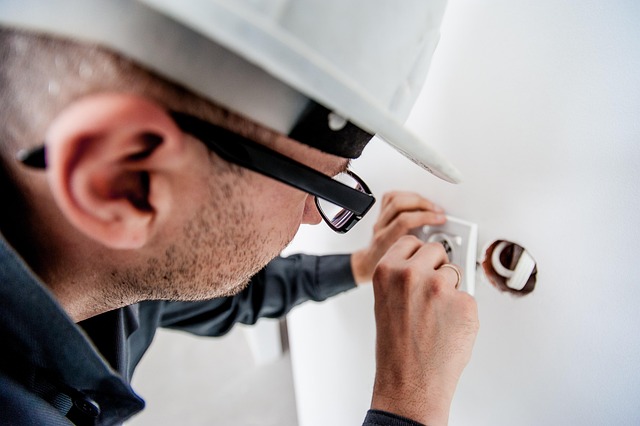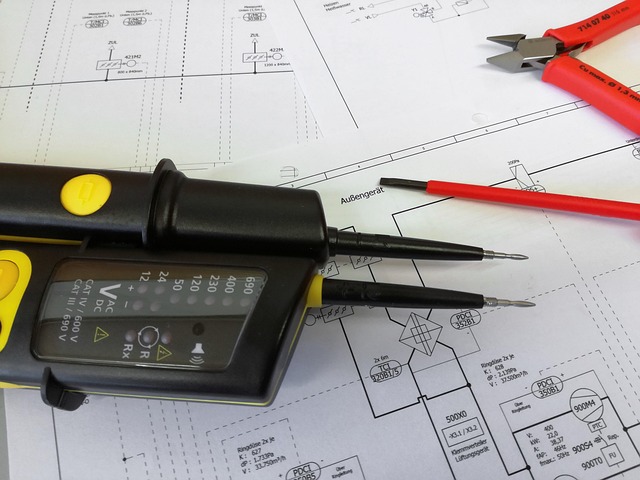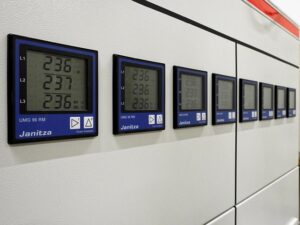Replacing old fuses with modern circuit breakers, a task handled by qualified electricians, significantly enhances electrical system safety and convenience. Circuit breakers interrupt abnormal currents, preventing fires and damage, and can be reset multiple times. Homeowners should plan upgrades carefully, consult experts, understand costs, and learn maintenance to ensure optimal safety.
Looking to upgrade your home’s electrical safety? It’s time to consider replacing old fuses with modern circuit breakers. This simple switch offers enhanced protection against overloads, short circuits, and fires. Our article guides you through the process, from understanding the differences between outdated fuses and advanced circuit breakers to the benefits for both homeowners and electricians. Learn why this seemingly small change can significantly improve your home’s electrical security.
- Understanding Old Fuses and Modern Circuit Breakers
- The Process of Replacing Fuses with Circuit Breakers
- Benefits and Considerations for Homeowners and Electricians
Understanding Old Fuses and Modern Circuit Breakers

Old fuses, once a standard safety feature in electrical systems, have largely been replaced by modern circuit breakers. Understanding the differences between these two components is crucial for any electrician dealing with older homes or outdated wiring. Fuses are designed to protect circuits by blowing when an excessive current passes through them, thus interrupting the flow of electricity. However, they require manual replacement after tripping and have a limited rating, making them less versatile than their modern counterparts.
In contrast, circuit breakers are automatic protective devices that detect abnormal electrical currents and break the circuit to prevent damage. They offer enhanced safety features like overcurrent protection and short-circuit protection. Circuit breakers can be reset multiple times without replacement, making them more convenient for electricians during maintenance or repairs. This advancement in electrical safety highlights the importance of updating old systems to ensure a safer and more efficient home environment.
The Process of Replacing Fuses with Circuit Breakers

Replacing fuses with circuit breakers is a straightforward yet essential task for any electrician. It involves locating and accessing the fuse box, often found in a home’s basement or electrical panel. With safety as a top priority, the electrician will first turn off the main power supply to ensure no live wires are connected during the process. Old fuses, typically identified by their glass or plastic enclosures, are carefully removed, revealing the circuit they protected.
The next step is to install the modern circuit breaker, which serves the same protective function but with enhanced capabilities. Circuit breakers are designed to interrupt the electrical flow in case of overcurrent or short circuits, thus preventing potential fires and damage. Once installed, the electrician tests the new circuit breaker to ensure it operates correctly and safely before restoring power to the affected circuits.
Benefits and Considerations for Homeowners and Electricians

Benefits:
Replacing old fuses with modern circuit breakers offers numerous advantages for both homeowners and electricians. Firstly, circuit breakers provide enhanced safety features compared to traditional fuses. They automatically interrupt power flow in case of overloads or short circuits, preventing potential hazards like fires or electrical shocks. This is especially beneficial in older homes where the electrical system might not have been designed with modern safety standards in mind. Secondly, circuit breakers are more convenient for electricians, allowing for faster disconnection and re-establishment of power, streamlining repair and maintenance processes.
Considerations:
For homeowners, the transition requires careful planning and consultation with a qualified electrician. While circuit breakers are generally user-friendly, replacing old fuses might involve some initial costs. Electricians need to assess the electrical system, ensuring compatibility and safety before installation. Additionally, understanding the new circuit breaker panel and learning how to reset it in case of a trip is essential for homeowners to maintain their newfound electrical safety.
When it comes to electrical safety and convenience, upgrading from old fuses to modern circuit breakers is a smart move. This simple yet effective change offers numerous advantages, such as improved protection against overloads, easier troubleshooting, and enhanced control over power distribution. Homeowners and electricians alike can benefit from this straightforward retrofitting process, ensuring a safer and more efficient home electrical system. So, why wait? It’s time to call in an electrician and modernize your circuit protection today!
